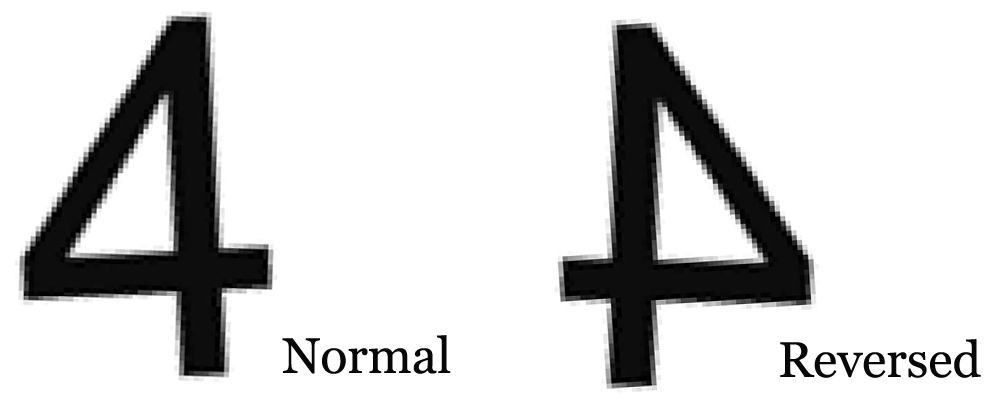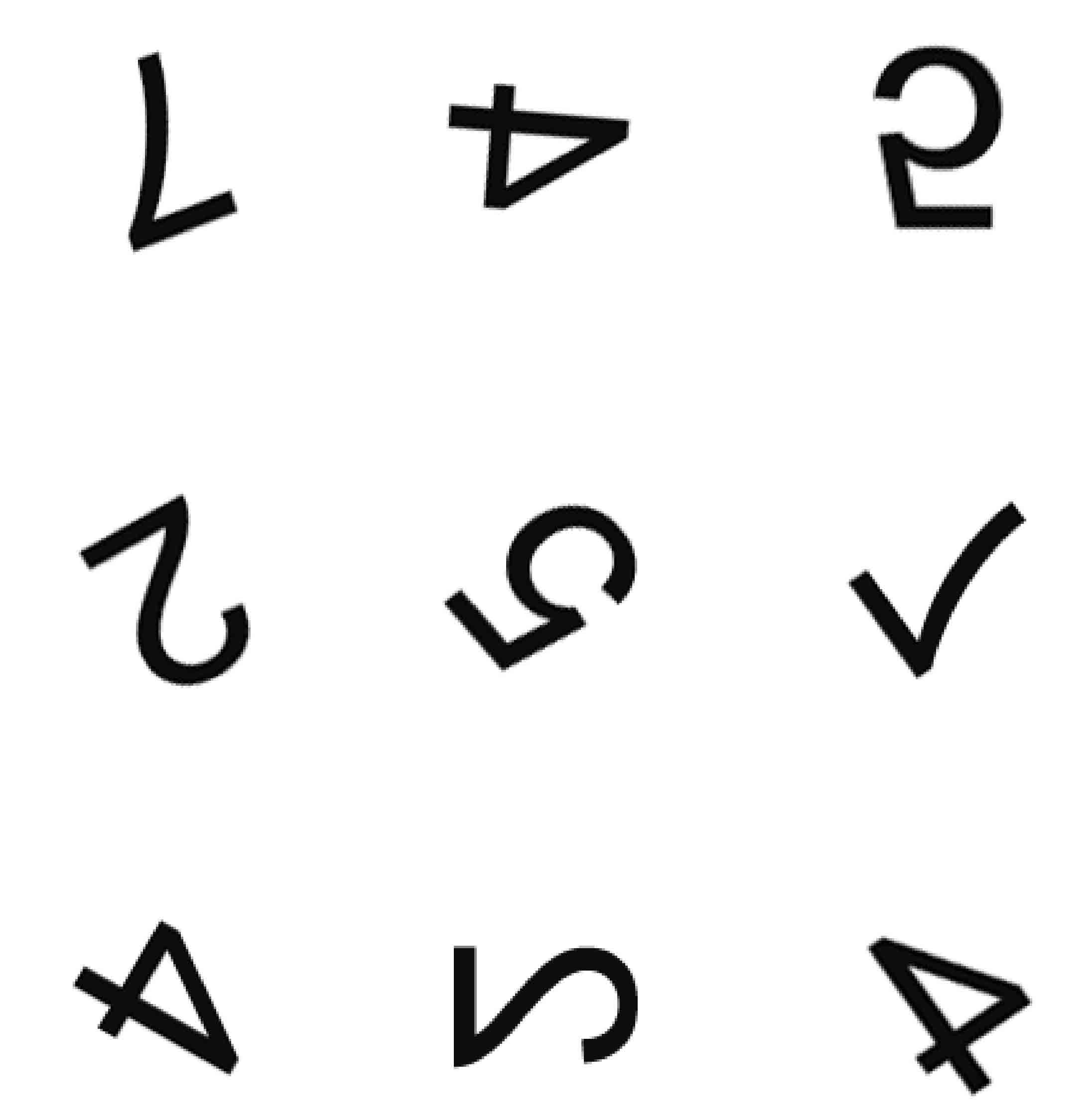Brain Teaser: Boost your visuospatial skills
Boost your visuospatial skills and learn about your brain
– By Dr. Pascale Michelon
Visuospatial skills are used everyday in many ways, ranging from going from one room to another in your house to solving a jigsaw puzzle and navigating in a new city. 
One specific visuospatial skill has to do with moving spatial information around in your head. It is called mental rotation.
Let’s take an example. Can you picture in your head an arrow pointing to the right? Now, turn this arrow so it points to the left. Done?
You have just performed a mental rotation! People use this ability when they read maps, use tools, play chess, arrange furniture, drive in traffic, etc.
Mental rotation relies mostly on the parietal areas of your brain (orange section in the brain image above).
Here is a brain exercise to stimulate your mental rotation skill.
For each number, decide whether it is a normal or reversed number (see example below).

Note: NO FLIPS allowed!

Answers
Row 1: normal, reversed, reversed
Row 2: normal, normal, reversed
Row 3: normal, reversed, reversed
 — This article was written by Pascale Michelon, Ph. D., for SharpBrains.com. Copyright 2008. Dr. Michelon has a Ph.D. in Cognitive Psychology and has worked as a Research Scientist at Washington University in Saint Louis, in the Psychology Department. She conducted several research projects to understand how the brain makes use of visual information and memorizes facts. She is now an Adjunct Faculty at Washington University, and teaches Memory Workshops in numerous retirement communities in the St Louis area.
— This article was written by Pascale Michelon, Ph. D., for SharpBrains.com. Copyright 2008. Dr. Michelon has a Ph.D. in Cognitive Psychology and has worked as a Research Scientist at Washington University in Saint Louis, in the Psychology Department. She conducted several research projects to understand how the brain makes use of visual information and memorizes facts. She is now an Adjunct Faculty at Washington University, and teaches Memory Workshops in numerous retirement communities in the St Louis area.
For more exercises, check out our Brain Teasers section.



five in first row is reversed
So…when is the website going to be fixed to reflect the correct answer? This has been going on since March. It’s now November. ;^)
We had assumed readers would see Pascale’s correction in the Comments section…but clearly that didn’t do the trick, so we have corrected the answer itself. Thank you.
Flipping is the measure of whether the thing is reversed. If it has to be flipped (and then possibly rotated also) for it to appear normal then it is reversed. If it can simply be rotated within the two dimensions that it is presented in then it is normal. So when she says, “no flipping”, it is almost an entrenched joke because it is a limitation on how many dimensions you are allowed to manipulate in order to solve the problem. Personally it is easier for me to flip than it is to rotate so I solve it by flipping (unless the letter is oriented just right, then it is easier to rotate). Rotation works fine and is a two dimensional solution. I think that the inclusion of flipping makes it more interesting as long as you watch yourself rotating or flipping and notice your minds tendency to take the path of least resistance, but I have always thought that watching the problem solver solve the problem is vastly more interesting than the problem itself.
(Just thoughts, enjoy!)
None are normal. They may not be a perfect reversal, but, none are a perfect normal.